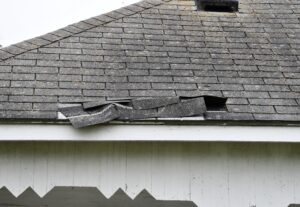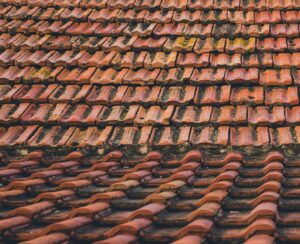Roofs may be taken for granted until they’re leaking, dripping, or cracking. To quote the ultimate source of truth, Counting Crows, “you don’t know what you got ’til it’s gone.” And a failing roof can have consequences on more than just your roof. As conditions deteriorate, the safety of your household becomes increasingly jeopardized.
Procrastinating roof repairs or replacement–waiting until it has sprung a leak or collapsed–will cost you thousands more in the end.
Here are 7 signs that can help you determine whether now is the time to replace your roof.
Age
Asphalt shingling, the most commonly used roofing material in the US, is typically installed with a warranty of 15-20 years—preferred contractors can provide warranties of 30, 40, and 50 years. They tend to give warranties for the expected lifespan of your roof. So whatever your roofing material or warranty, if your roof has nearly run out of warranty, it’s time for a replacement.
Damage
Damaged or missing shingles are most often caused by a loss of weatherproofing properties. A homeowner can often replace a few such shingles themselves. But if multiple shingles have fallen off or are bent, or if there’s granule build up in gutters, your roof needs immediate special attention.
Try to inspect your roof twice a year—spring and fall, and after major storms—to ensure that your family is safe under a secure and reliable roof.
Leakage
A leaky roof is a major cry for attention. An improperly installed roof, cracked flashing, loss of weatherproofing properties, or missing shingles can all cause leaking.
If your ceilings show evidence of water spots, streaks, or stains, if your chimney is leaking, or if sunlight is streaming between attic roof beams, your home is in danger.
Moisture
A leaking roof or poorly ventilated attic causes moisture to build up—through blocked ventilation or improper intake.
An overly insulated attic is also problematic. It can prevent warm, moist air from leaving your home, which creates a build up of water. This water rusts through nails and rots through your roof structure.
Don’t ignore signs of possible moisture build up—like if your roof appears to be sinking or dipping. All roofs, new or old, are in the danger zone on this one.
Growth
Just as moisture build up eats through your roof, it also creates a thriving environment for mold and mildew—health hazards to you and your roof. Mold causes respiratory problems, nasal and sinus congestion, throat irritation, and asthma in infants. Prolonged exposure can lead to more serious effects.
Additionally, lookout for algae and moss growth on your rooftop—moss, if not taken care of immediately, can cause irreversible damage.
Money
Your roof plays a key role in securing a low electric bill. And roof ventilation is vital to air circulation within your home. If your roof is trapping air or letting too much air escape, your HVAC unit will start to work overtime, resulting in higher energy bills. So if you notice your energy bill going up, you may take a look at your roof.
Aesthetic
Extreme weather can leave a roof looking shabby and impair its function—it can cause shingles to loosen, crack, or go missing. It can also leave punctures or discoloration in its wake. In the case of extreme weather, to keep your roof from becoming the eyesore of your neighborhood and, more importantly, to secure your safety, you may seriously consider replacing your roof.
***
If your roof is exhibiting one or more of these signs, don’t hesitate to act now in ensuring the safety and comfort of you and your family.



